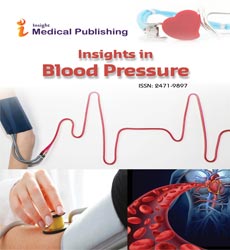Abstract
Decreased Glycaemia with Renal Failure in Diabetes Betides in Relation to the Change in Renal Glutamate Metabolism
In diabetes, a wonder is found in which blood glucose
focus (BGC) drops in corresponding with the
movement of nephropathy, frequently making it hard
for doctors to forestall hypoglycaemia. Diabetic
patients with diminished renal capacity may seem to
show low HbA1c values because of renal frailty and
ensuing medicines utilizing erythropoietin
arrangements. Notwithstanding being rectified, in any
case, BGC keeps on dropping in corresponding with
loss of renal capacity. Generally, more slow insulin
digestion and discharge by the kidneys was believed to
be one reason for this drop in BGC. Nonetheless,
considering hardly any diabetes patients with low renal
work show hyperinsulinemia, it is hard to clarify how
renal disappointment alone can cause hypoglycaemia
due exclusively to low insulin freedom. Somewhere in
the range of 20% and half of endogenous glucose
discharge is given by renal glucose discharge. Renal
glucose discharge is performed uniquely with
gluconeogenesis in the renal proximal tubules (RPTs)
and the substrates of renal gluconeogenesis are lactate,
glycerol, and glutamine in the blood. Lactate is
changed into pyruvate; the pyruvate enters the
mitochondria what's more, is utilized in
gluconeogenesis. Glutamine, then again, becomes α-
ketoglutarate by method of glutamate and is utilized
for gluconeogenesis. Insulin stifles the kidneys'
glucose discharge, yet doesn't control the take-up of
glucose, lactate, glycerol, or glutamine. There is a
likelihood that BGC drops in renal disappointment as a
result of this decrease in renal gluconeogenesis. There
are a few reports depicting this wonder. A few kinds of
amino acids in the blood, for example, glutamine, are
taken into the RPTs from the basolateral side. The
larger part of amino acids in the blood, be that as it
may, are totally separated by the glomeruli and amino
acids are then totally reabsorbed into the RPTs from
the apical side. In other words, numerous glucogenic
amino acids, including glutamate, are ingested inside
the RPTs by reabsorption from the apical side be that
as it may, not from the basolateral side. Be that as it
may, there are barely any examinations on the
utilization of these glucogenic amino acids once
reabsorbed into the RPTs for gluconeogenesis
purposes. In this way, we estimated the blood
convergence of amino acids in diabetics and nondiabetics
just as their urinary amino acids discharge
assessed the renal reabsorption pace of amino acids,
and inspected the connection between these and
diminished renal capacity. A decrease in renal
gluconeogenesis shows up to be one reason for the
drop in blood glucose focus (BGC) going with
diminished renal capacity in diabetes. In any case, it
stays hazy with regards to how this drop in BGC is
identified with the adjustments in reabsorption of
amino acids (AAs) that go with diminished renal
capacity. We in this way examined the connection
between the drop in BGC going with diminished renal
capacity in diabetes patients also, changes in the
reabsorption paces of AAs. In diabetics, blood
glutamate fixation and reabsorption pace of glutamate
were decreased. The blood glutamine focus was
expanded; notwithstanding, the reabsorption of
glutamine was unaltered. The reabsorption paces of
This work is partly presented at 15th World Hematology & Immunology Congress December 05-06, 2018 Lisbon,Portugal
Extended Abstract
Vol. 5, Iss.1
2019
Insights in Blood Pressure
certain AAs, including glutamate, indicated a positive
relationship with eGFR. In any case, a decreased
reabsorption pace of glutamate was the main
autonomous hazard factor for diminished eGFR. In
addition, as it were the reabsorption pace of glutamate
related emphatically with HbA1c. In diabetes,
glutamate reabsorption shows a decay that equals
diminished renal capacity: this decrease is identified
with a drop in BGC. The decrease in the reabsorption
of glutamate seems to impact renal gluconeogenesis by
decreasing the gluconeogenesis-modifying factor
(malate-aspartate shuttle)ÃÆÃÂÃâââ¬Â¢ not by decreasing
gluconeogenic substrates. Further investigations are in
this manner expected to look at the job glutamate plays
in renal gluconeogenesis.
Keywords:Diabetic nephropathy; Reduced glycaemia;
Glutamate; Glutamine; Gluconeogenesis
Author(s):
Susumu Ogawa1,2*, Manami Shimizu1, Kazuhiro Nako1, Masashi Okamura1 and Sadayoshi Ito1
Abstract | PDF
Share this

Google scholar citation report
Citations : 71
Insights in Blood Pressure received 71 citations as per google scholar report
Abstracted/Indexed in
- Google Scholar
- China National Knowledge Infrastructure (CNKI)
- Directory of Research Journal Indexing (DRJI)
- WorldCat
- Secret Search Engine Labs
Open Access Journals
- Aquaculture & Veterinary Science
- Chemistry & Chemical Sciences
- Clinical Sciences
- Engineering
- General Science
- Genetics & Molecular Biology
- Health Care & Nursing
- Immunology & Microbiology
- Materials Science
- Mathematics & Physics
- Medical Sciences
- Neurology & Psychiatry
- Oncology & Cancer Science
- Pharmaceutical Sciences
